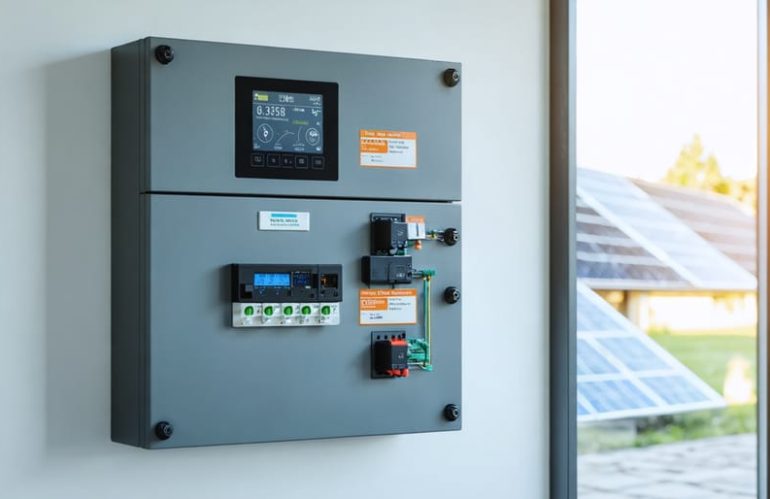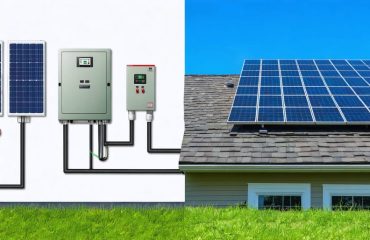Maximize your solar investment by claiming the federal tax credit for electrical panel upgrades – a critical component of modern smart solar upgrades. Under the Inflation Reduction Act, homeowners can now include electrical panel modernization costs in their 30% solar tax credit when the upgrade is necessary to support a new solar installation. This game-changing provision helps offset the $1,500 to $4,000 typical panel upgrade cost, making the switch to solar more accessible than ever. Whether your existing panel lacks capacity for solar integration or needs modernization for safety compliance, this expanded tax benefit transforms a necessary expense into a strategic investment. Understanding the qualification requirements and documentation process ensures you maximize available incentives while future-proofing your home’s electrical infrastructure.
Why Your Electrical Panel Matters for Solar Installation
Signs Your Panel Needs an Upgrade
Several signs indicate your electrical panel may need an upgrade before installing solar panels. If your home was built before 1990, your panel might have limited capacity that won’t accommodate a solar system. Watch for frequently tripping circuit breakers, flickering lights, or buzzing sounds from the panel – these are clear warning signs of an overtaxed system.
A panel rated less than 200 amps typically needs upgrading for solar installation, as most modern solar setups require at least this capacity. Check if you have a fuse box instead of circuit breakers, as these older systems usually need replacement. Multiple extension cords or power strips throughout your home can indicate insufficient outlets and an undersized panel.
Other red flags include warm or discolored breakers, burning smells near the panel, or rust and corrosion on the box itself. If you notice these issues, or if your panel feels warm to the touch, it’s time to consider an upgrade. Remember, a modern electrical panel isn’t just about solar readiness – it’s essential for your home’s safety and efficient power distribution.
The Solar-Ready Panel Standard
A solar-ready electrical panel is specifically designed to accommodate and efficiently manage the power flow from solar panels to your home. The key features that make a panel solar-ready include adequate amperage capacity (typically 200-225 amps), dedicated spaces for a solar breaker, and compatibility with modern solar inverter systems. When designing the perfect solar system, having the right panel is crucial for optimal performance and safety.
These panels come equipped with a main service disconnect, which allows for easy solar integration, and dual bus bars that enable proper connection of solar equipment. Most solar-ready panels also feature smart monitoring capabilities, helping you track energy production and consumption in real-time. They’re built with additional spaces for circuit breakers to accommodate future expansion of your solar setup.
To qualify as solar-ready, the panel must meet current National Electrical Code (NEC) requirements and have UL certification. This ensures your system operates safely and efficiently while maximizing the benefits of your solar investment.
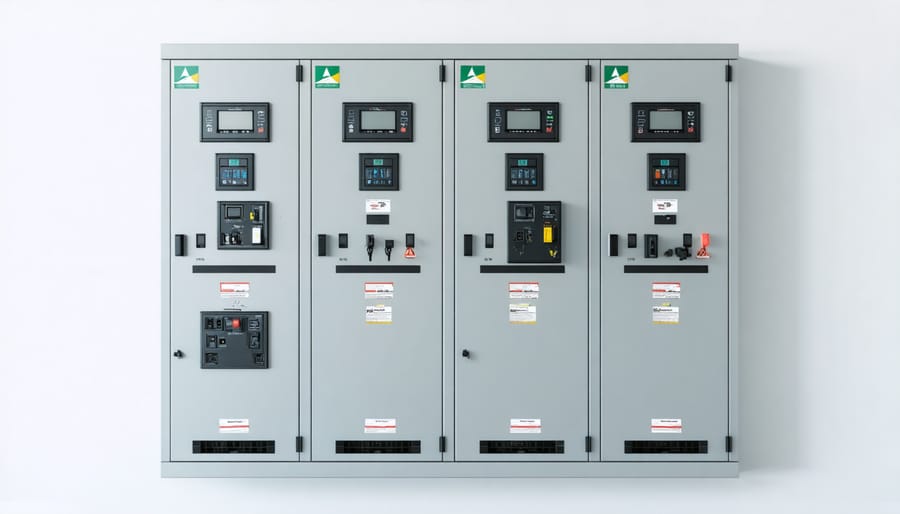
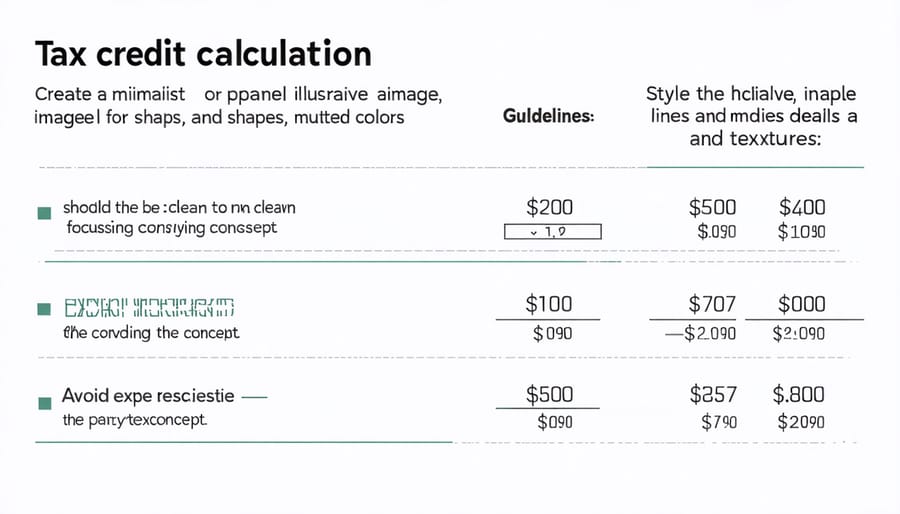
Tax Credit Benefits for Panel Upgrades
Qualifying Requirements
To qualify for the solar tax credit on your electrical panel upgrade, the improvement must be necessary for the safe and proper installation of your solar system. The upgrade should be completed in the same tax year as your solar installation, and both must be installed at your primary or secondary residence within the United States.
Key qualifying requirements include:
– Your existing electrical panel must be inadequate to handle the additional solar power capacity
– The upgrade must be performed by a licensed electrician
– You must have documentation showing the panel upgrade was necessary for solar installation
– The installation must be completed before December 31, 2034
– You must have sufficient tax liability to claim the credit
The panel upgrade costs are eligible only when they’re part of a new solar installation project. Stand-alone panel upgrades without solar installation don’t qualify. Keep all receipts, contracts, and documentation from your installer showing the upgrade was required for your solar system’s installation.
Remember that the credit applies to both the equipment and labor costs associated with the panel upgrade, as long as they’re directly related to enabling your solar installation.
Documentation Needed
To claim your solar tax credit for an electrical panel upgrade, keep these essential documents on file:
1. Itemized receipts showing the cost of both the panel upgrade and solar installation
2. Signed contract or agreement from your licensed electrician detailing the panel work
3. Documentation proving the panel upgrade was necessary for solar installation
4. Building permits and inspection certificates
5. IRS Form 5695 (Residential Energy Credits)
6. Photos of the old panel and completed upgrade
7. Written statement from your solar installer confirming the panel upgrade requirement
Make sure to retain all documentation for at least three years after claiming the credit. It’s recommended to keep both digital and physical copies of these records. Consider creating a dedicated folder to organize all related paperwork, making it easily accessible if needed for tax purposes or future reference.
Cost vs. Benefits Analysis
When evaluating an electrical panel upgrade as part of your complete solar retrofit solution, the initial costs typically range from $1,500 to $4,000. However, these expenses can be offset significantly through the federal solar tax credit, which covers up to 30% of the total project cost when the upgrade is necessary for solar installation.
Beyond immediate tax savings, upgrading your electrical panel delivers substantial long-term benefits. Modern panels support enhanced energy efficiency, reduce fire risks, and accommodate future home improvements. Homeowners often see decreased insurance premiums and increased property values, with studies showing up to a 3-5% boost in home value following electrical upgrades.
The return on investment becomes even more attractive when considering the panel’s 30-40 year lifespan and its role in enabling maximum solar energy production. When factoring in monthly utility savings from solar power, most homeowners recover their panel upgrade costs within 5-7 years, making it a financially sound decision for sustainable living.
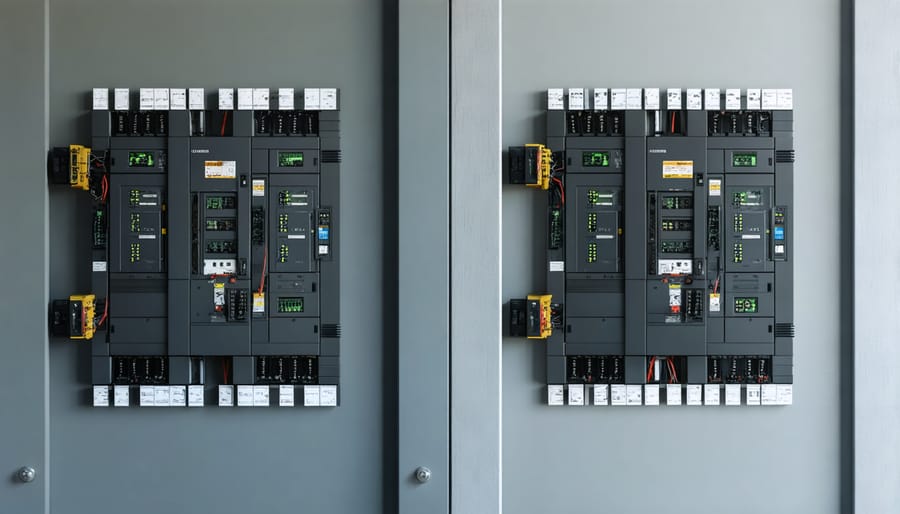
Steps to Secure Your Panel Upgrade Tax Credit
To secure your panel upgrade tax credit, start by documenting your electrical panel upgrade with detailed receipts and contractor information. Ensure your panel upgrade is part of a qualifying solar installation project completed within the current tax year. Keep all documentation showing the upgrade was necessary for solar system compatibility.
Consult with a tax professional familiar with renewable energy credits to confirm your eligibility. When filing your taxes, use IRS Form 5695 for Residential Energy Credits, including the panel upgrade costs as part of your solar installation expenses. Calculate 30% of the total qualified expenses, including both solar panels and the necessary electrical upgrades.
Remember to retain copies of all permits, inspections, and certification documents for at least three years after claiming the credit. If audited, these records will validate your claim.
Upgrading your electrical panel as part of your solar installation journey offers multiple advantages that extend beyond the immediate tax benefits. Not only can you potentially save thousands through the federal solar tax credit, but you’ll also enjoy enhanced home safety, increased property value, and a future-ready electrical system. By combining your panel upgrade with solar installation, you’re making a smart investment that pays dividends in both sustainability and financial returns. Don’t miss out on this opportunity to modernize your home’s electrical infrastructure while maximizing available tax incentives. Take the first step today by consulting with a qualified solar installer to assess your home’s needs and begin your journey toward a more sustainable, energy-efficient future.

